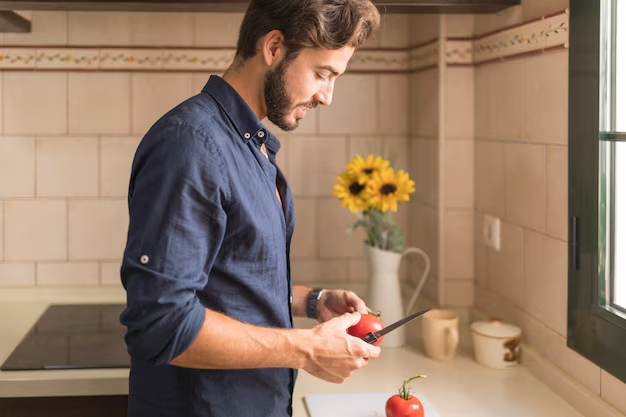How Long Will Your Refrigerator Stay Cold Without Power?
Picture this: a sudden power outage sweeps through your area, and with it, concerns over your refrigerated goods come to mind. Just how long will a closed refrigerator keep its cool and protect your perishables? This article delves deep into the mechanics, strategies, and practical tips to keep your food safe and extend the life of your refrigerator's cooling capabilities in the absence of electricity.
Understanding the Basics: How Refrigerators Retain Cold
Before exploring how long a closed refrigerator can maintain its temperature, it’s important to understand the core function of a refrigerator. This appliance is designed to remove heat from its interior, maintaining a consistent and cool environment that slows bacterial growth and increases the shelf-life of your food.
How Insulation Works
Insulation is Key: The term "insulation" refers to the materials lining the walls of your refrigerator. They are designed to minimize heat exchange between the inside and outside environments. Modern refrigerators boast improved insulation, enhancing their ability to keep cool even when power is lost.
Seals and Gaskets: These components play a pivotal role in maintaining an airtight seal for your fridge doors. Well-maintained seals reduce the amount of warm air entering, keeping the internal temperature stable for longer.
Estimated Timeframes: How Long Can It Stay Cold?
A closed refrigerator, in ideal conditions, can generally maintain a safe temperature for about 4 to 6 hours. The timeframe can vary, based on several critical factors.
Influencing Factors
Refrigerator Size and Type: Larger units or those with enhanced energy efficiency typically have better insulation, extending the cooling duration.
Frequency of Opening: Every time the door opens, precious cold air escapes. Keeping the refrigerator door shut is essential to preserving the internal temperature for as long as possible.
Initial Temperature: The starting temperature can affect how long it takes to warm up. Fridges set at lower temperatures may remain within safe zones slightly longer.
Contents: A full refrigerator holds cold better than an empty one. The more mass inside, the more retained cold energy, which helps to stabilize the internal climate.
Temperature Thresholds
To effectively safeguard your groceries during an outage, it's crucial to understand what temperatures matter:
- Refrigeration Safety Threshold: Food should be kept below 40°F (4°C) to be considered safe for consumption.
- Freezer Consideration: Freezers, if kept closed, can retain their temperature for 24 to 48 hours depending on their contents and insulation quality.
Practical Tips for Maximizing Cool Retention
To maximize the cold retention of your fridge during a power outage, several strategies can be implemented:
- Plan Ahead and Consolidate: Prioritize moving foods that may spoil quickly into the fridge/freezer ahead of outages if they are anticipated or predicted.
- Avoid Unnecessary Door Openings: Each door opening releases the cool air inside, hastening temperature elevation.
- Add to the Contents: Consider placing ice packs or containers of water within the fridge beforehand. They will turn cold and absorb warm air, mitigating temperature rises.
- Use Thermal Wraps: For particularly valuable or perishable items, wrap them in foil or thermal blankets to keep them cold for longer.
Understanding Refrigeration Beyond Outages
Being familiar with your refrigerator's settings and maintenance can prevent not only spoilage during power loss but also maximize energy efficiency and prolong the appliance's lifespan.
The Role of Temperature Settings
Below are the optimal ranges for different refrigerator components:
- Refrigerator Compartment: Set between 35-38°F (1.5-3°C) to ensure optimal food preservation without freezing.
- Freezer Compartment: Aim for 0°F (-18°C) or lower for quality long-term storage.
Maintenance for Efficiency
- Clean Coils Regularly: Dust accumulates on compressor coils that can hinder performance.
- Check Seals and Gaskets: Regularly inspect and clean to maintain a proper seal.
- Monitor Thermometers: Built-in sensors may not be accurate; external thermometers ensure precise monitoring.
Emergency Strategies: What To Do When the Power Returns
Once power is restored, clear action steps are valuable in reducing spoilage risks and managing any affected food.
- Assess Food Safety: Check each item and consider discarding anything exposed to temperatures above 40°F for over two hours.
- Cool Down Strategy: If not all items can return to the fridge, chill them rapidly in coolers with ice packs until space allows.
- Organize Efficiently: Restock by placing newer items behind older ones to ensure rotation and consumption within safe timeframes.
Quick Summary: Keeping Your Cool
✨ Key Takeaways:
- Keep the Doors Closed! 👐 Every unplanned opening allows cold air out and warm air in, reducing preservation time.
- Load Your Fridge 📦: A full refrigerator retains cold better than an empty one, thanks to thermal mass.
- Use Ice packs and Chilled Water ❄️ to absorb warm air and stabilize the internal environment.
- Maintain Your Appliance: Clean coils and seals regularly for enhanced functionality and prevention of energy waste.
In conclusion, understanding and maintaining your refrigerator not only safeguards against spoilage during outages but ensures consistent performance. By implementing the strategies and insights shared here, you can ensure your food remains safe and your appliance runs efficiently, no matter the circumstances.
